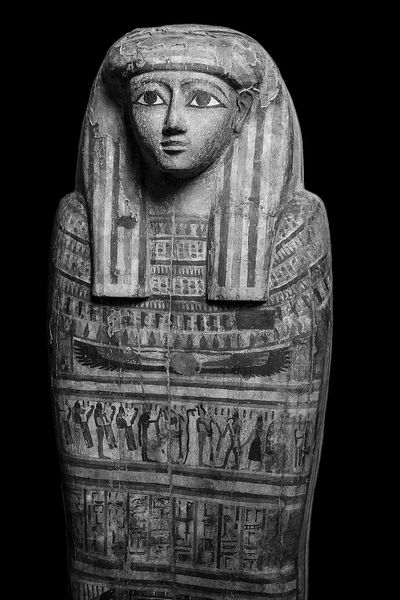Who ruled the world? In ancient Egypt, often times it was a woman.

If you had 10 seconds to name a queen of ancient Egypt, who would it be? Probably Cleopatra, who was famous for her alliances with Roman leaders Julius Caesar and Marc Anthony.
But who came before her? Nefertari, Isis, Ahmose and Hatshepsut are just a few queens of Egypt whose legacies aren’t as widely known. A new exhibit at the National Geographic Museum in Washington, D.C., aims to change that.
“I only knew there was Cleopatra, I didn’t know there were so many other queens,” said Roxie Mazelan, a 9-year-old Girl Scout visiting the “Queens of Egypt” exhibit.
Roxie and her troop from Alexandria, Virginia, put on their 3-D glasses to explore the exhibit’s virtual-reality dome. They traveled back in time and walked through the virtual tomb of Queen Nefertari, principal wife of Ramses II.
Addison Hood, 9, thought it was cool to see artifacts virtually and come across them physically throughout the exhibit. Among the popular artifacts are Nefertari’s shoes, found in her tomb by an Italian archaeologist in 1904. Jewelry, makeup jars and mirrors that once belonged to Egypt’s female rulers are also on display.
There are hands-on exhibit features, including jars that contain scents such as henna and lotus. You can pop them open and smell. Archaeologists found jars like these in tombs, and from the residue they could extract the scents Egyptian women once wore. You can also play senet, a board game similar to Chutes and Ladders that pharaohs played around 1550 B.C.
Queen Hatshepsut (pronounced hat-SHEP-soot) was the most influential Egyptian queen and known as a great diplomat during her 22-year reign. To gain respect, she dressed as a man, wore a false beard and created statues of herself with a pharaoh’s headdress. When her stepson took the throne, he made sure people knew there was a new leader in town.
“Out of all the ancient civilizations, Egypt’s was the only one that really valued women,” said Lexie de los Santos, who helps promote National Geographic exhibits.
Egyptian women could own land, choose a husband, get divorced and even govern.
“But after their rule, [male leaders] just erase all memory of these women because they don’t want them to have all that success,” de los Santos said.
Kara Cooney, an Egyptologist who wrote a book for National Geographic about the queens, said these women were often used as protectors. Men would put women in high positions to keep young male leaders safe and give them time to mature. When a man was ready to take over as pharaoh, the woman in charge would step down.
Addison noted that even after thousands of years, female leaders haven’t gained a lot of ground.
“I think it was cool to see women in the place of men,” she said. “You don’t see that a lot now.”